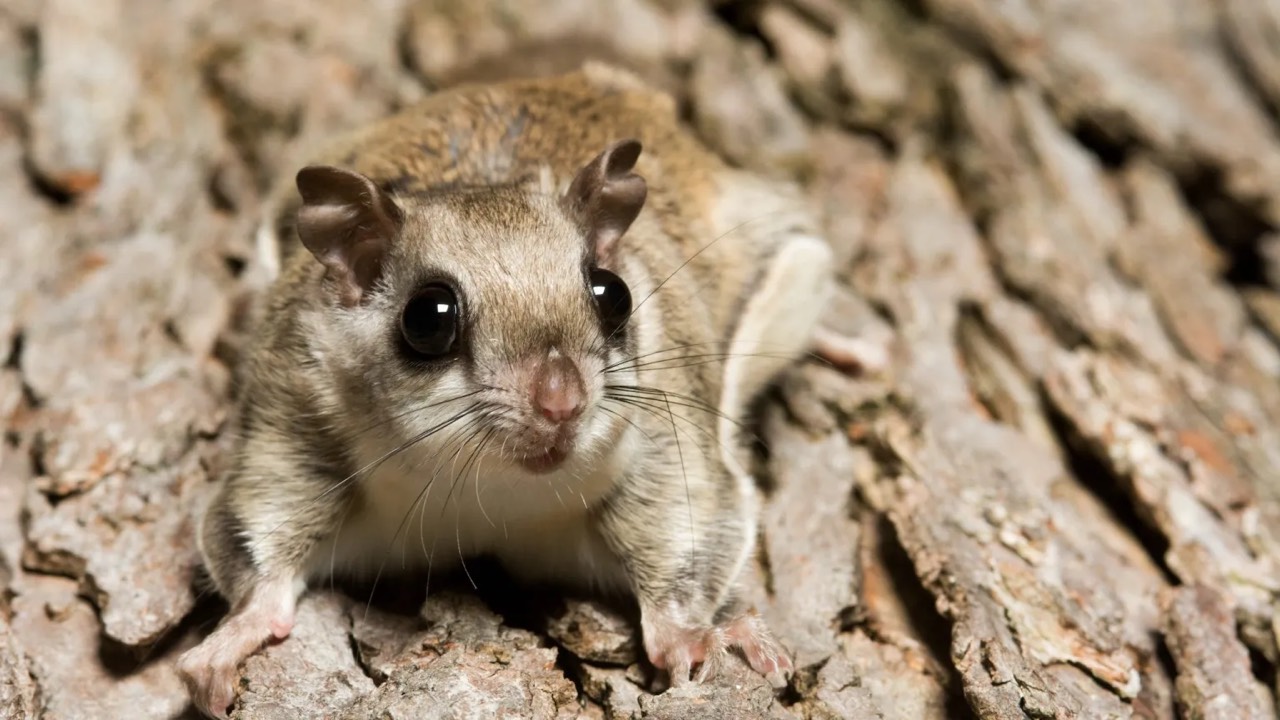
-
Mustela nivalis
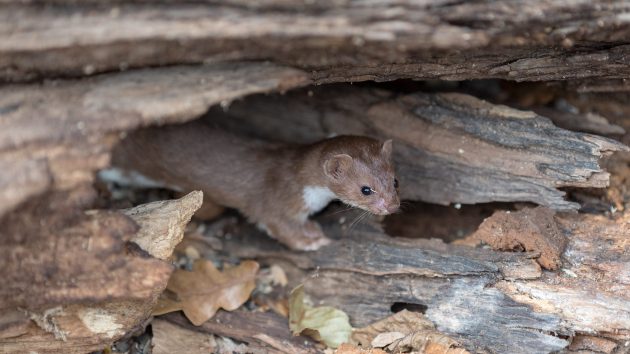
A least weasel. © Joachim Dobler / Flickr The mammalian Order Carnivora includes some of the most dramatic creatures on the planet, the lions and tigers and bears. It also includes many familiar neighborhood mammals like raccoons, striped skunks and red fox.
The least weasel is the smallest of the carnivores. They weigh less than two ounces and is about 7 inches long. It’s found across much of the northern tier of the United States, and much of Canada and Alaska. The least weasel is small but a mighty predator, as it will starve if it doesn’t consume about half of its body weight each day.
It’s also incredibly difficult to see. Researchers might catch them in small mammal traps, but for most of us, we’ll never even glimpse one. If you do, record your sighting. As recently covered in Cool Green Science, all 3 North American weasels are facing population declines, and sightings can help researchers track how weasels are faring.
Distinguishing weasel species can be difficult. All three are brown, and some turn white in winter. The least weasel can be identified by size, but its tail is diagnostic. It is much shorter and lacks the black tip found in the other two species.
-
Aplodontia rufa
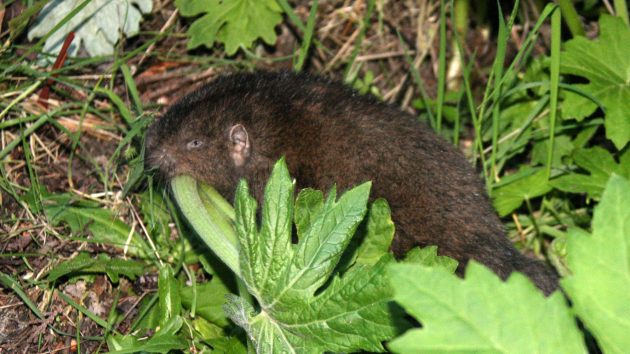
© Coke Smith / cokesmithphototravel.com The mountain beaver is not a beaver, nor is it always found on mountains. But this poorly named rodent is a one-of-a-kind fuzzball that lurks in the coastal forests of the Pacific Northwest.
As mountain beaver expert Samantha Hopkins puts it, ““Most people don’t know there are these little brown loafs living in forested tunnels and eating ferns.”
Hopkins, by the way, has studied mountain beavers for many years, but has never seen a live one in the wild.
I know some hard-core mammal watchers have had luck staking out their tunnels or colonial areas. It’s not an easy quest, but the reward is an encounter with a cool creature that evolved quite differently from other rodents. You can read more about them in this in-depth feature I previously wrote.
-
Lepus callotis
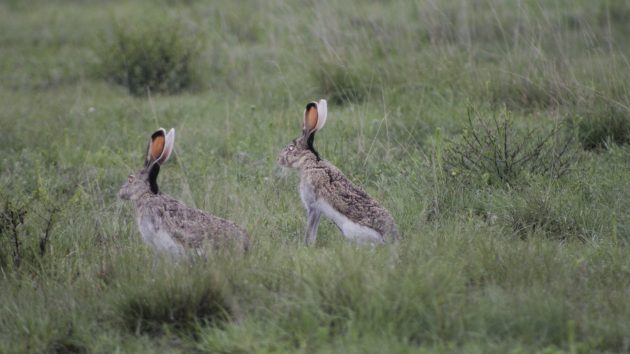
© Juan Cruzado Cortés / Wikimedia Commons I love jackrabbits. I love their impossibly long ears and even more impossibly long jumps. I love the landscapes you find them.
Jackrabbits are often considered abundant. But there are signs that several species are now much less abundant than they once were. Some declines are alarming. Like the white-sided jackrabbit.
The white-sided jackrabbit is primarily found in Mexico, where it is endangered. Its range also includes Hidalgo County in southern New Mexico. All jackrabbits are quite visible, so it is possible to see them in the United States, but they have to be among the rarest of mammals. In 2011, biologists counted 45 white-sided jackrabbits in the United States. That number is likely lower now.
Changes in grazing practices is doubtless driving the decline. I am not a fan of the phrase “see it before it’s gone.” Let’s go see the jackrabbit, then work to protect it so it’s not gone.
-
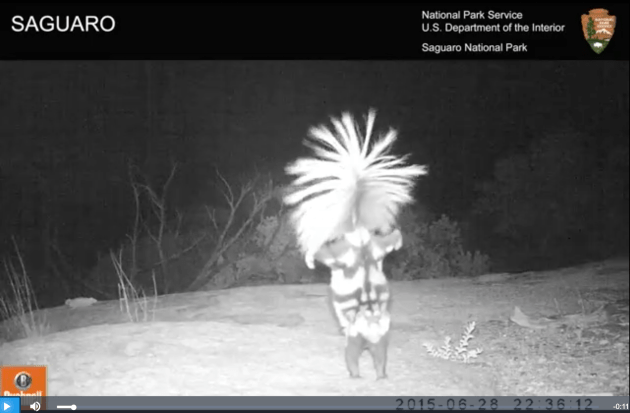
© Saguaro National Park / Flickr A new paper finds that the spotted skunk is actually 7 species, a taxonomic split that has been covered by major media outlets. Why? I suspect it’s simply because spotted skunks are cute. Really, really cute. Also, when it sprays, it stands on its two front legs, giving the appearance of a skunk headstand.
The popularity of the news coverage is also in part because most people have never seen one, although the spotted skunk has a fairly wide range across the United States and well into Central America.
Range maps indicate the western spotted skunk is found around my home in southwestern Idaho. I have never seen a live one. I have never seen a dead one. I have never met anyone who has seen one here.
This seems to be typical throughout their range. Yes, there are fairly regular sightings in the Grand Canyon and Channel Islands national parks. Reptile enthusiasts often see them while looking for snakes in Florida. They turn up on camera traps. But most of us in probable spotted skunk range never see one.
Biologists I’ve spoken to say this may be because the species in serious decline. So your spotted skunk sightings are important. Try to get a photograph and post it on iNaturalist. This will help conservationists better understand spotted skunk population trends.
-
Neofiber alleni
Spend enough time near wetlands and lakes in North America, and you’ll probably see muskrats. The round-tailed muskrat is another matter entirely. This species – the only in its genus – is found only in Florida and the Okefenokee area of Georgia. It does not overlap in range with the common muskrat.
It is also incredibly difficult to see. Mammal watcher extraordinaire Jon Hall estimates he spent 100 hours searching before he found one. They live in dense wetland vegetation. They are mainly crepuscular and nocturnal. You might see slight vegetative mounds, but even these are much more subtle than the mounds of common muskrats.
-
Sorex palustris
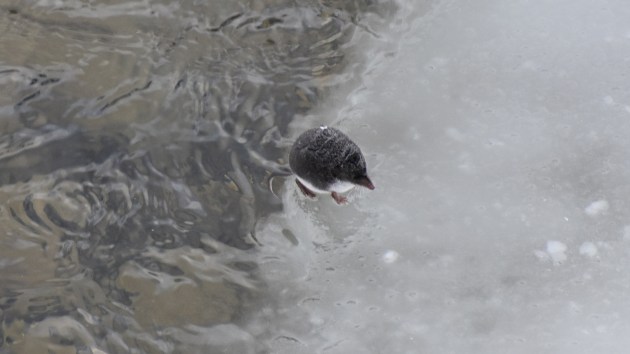
Water shrew on Pebble Creek. © NPS/April Henderson / Flickr Shrews are hyperactive, ferocious, little predators. Some species are among the most common North American mammals. Any shrew sighting is interesting, but the water shrew is my favorite.
As the name implies, the water shrew hunts aquatic insects underwater, often in small streams. It has stiff hairs on its feet that allow it to scamper across the surface of the water. Its stiff fur also traps air bubbles, allowing it to stay underwater for short bursts.
Last year, I got a quick look at one skittering across the top of the water. This summer, while fly fishing in Idaho’s Sawtooth Mountains, I saw one swim by in clear, shallow stream. I could clearly see the air bubbles in its fur as it darted along, and I count it as one of my all-time favorite small mammal sightings.
-
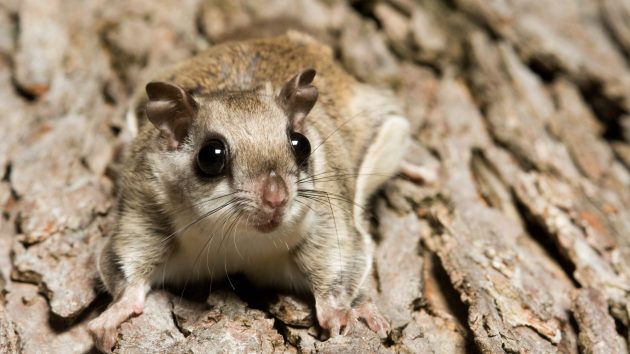
© Shutterstock Members of the squirrel family – tree squirrels, ground squirrels, chipmunks, marmots – are fun to spot across the continent. A dedicated mammal watcher, visiting national parks, could reasonably observe most of them in their natural habitat. The North American flying squirrels (now considered to be 3 species) are quite challenging for those trying to complete a “squirrel viewing slam.”
It’s not because they are uncommon. They are found in many forested habitats. But they’re nocturnal. And they glide. And you can spend a lot of time looking in the air at night without seeing them. I write this from experience.
There are nature centers that have feeding stations, offering close-up and unforgettable views. I saw a southern flying squirrel this way in Arlington, Virginia. They’ll sometimes pop out of a larger bird nesting box, and sometimes they get caught in mist nets set for owls. If you go looking for flying squirrels, bring a UV light. Why? Because they glow in the dark.
However you see one, a flying squirrel is a special sighting.
-
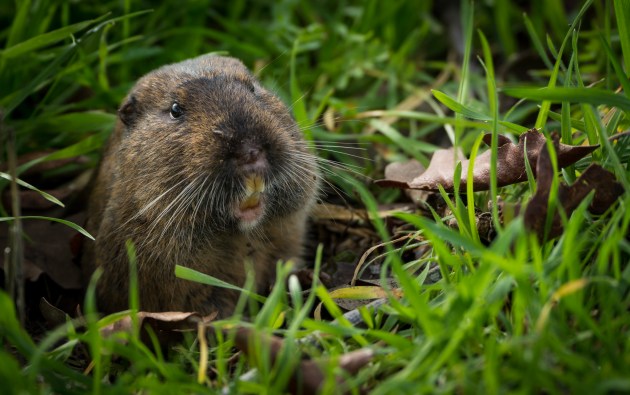
Peekaboo pocket gopher! Photo © Wade Tregaskis / Flickr There are many species of pocket gophers across the United States. They are considered agricultural and lawn pests in many places. Their mounds are highly visible. I include them here because most never take the time to stop and enjoy a gopher sighting.
First, the name “gopher” is often applied, incorrectly, to a host of other creatures including ground squirrels and voles. The actual pocket gopher is a short, stocky rodent with beady eyes. You don’t see them because they spend almost the entirety of their lives underground.
It’s time to give the pocket gopher some attention. Finding one on purpose can be a fun activity for the whole family. They are very photo-sensitive, so if any light gets into their hole, they quickly move to plug it up with dirt. This presents an opportunity for the keen (or perhaps deranged) mammal enthusiast. Find a fresh mound, poke a hole in the loose dirt and wait. With a little patience, you’ll see that even reviled pocket gopher is actually a great little animal. Check out my guide to the fine art of pocket gopher spotting for more details.
Wherever you live, there are undoubtedly cool mammals roaming around you haven’t seen. Get out and look, and let me know what you find in the comments.


